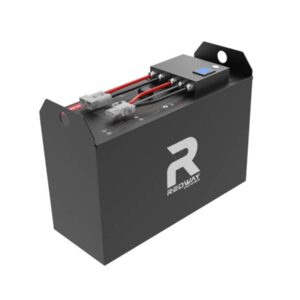What is the 30 80 battery rule?
The 30-80 battery rule recommends maintaining lithium-ion batteries between 30% and 80% charge to optimize lifespan. Avoiding full discharges and full charges reduces stress on electrodes, minimizing capacity fade. This practice balances usable energy with longevity, particularly critical for EVs and portable electronics. Pro Tip: Enable manufacturer-provided charge limiters where available to automate this range.
How to Maximize Forklift Battery Lifespan
Why does the 30-80% range matter?
Lithium-ion cells experience electrolyte decomposition and cathode lattice strain at voltage extremes. Operating between 3.0V–4.0V per cell (≈30-80% SoC) reduces lithium plating risks during charging. For example, smartphones cycled between 30-80% retain 85% capacity after 800 cycles versus 65% with full cycles. Transitional note: While capacity trade-offs exist, modern battery management systems (BMS) now compensate with buffer reserves.

How does depth of discharge affect cycle life?
Shallow discharges dramatically extend cycle counts. A 50% depth of discharge (DoD) provides ≈1,200 cycles versus 300 cycles at 100% DoD. This nonlinear relationship stems from reduced solid electrolyte interface (SEI) growth. Pro Tip: For solar storage systems, set inverters to 80% discharge depth – the sweet spot between daily usability and longevity.
| Depth of Discharge | Cycle Life | Total Energy Throughput |
|---|---|---|
| 100% | 300-500 | 300-500x |
| 80% | 600-900 | 480-720x |
| 50% | 1,200-1,500 | 600-750x |
Can partial charging reduce charging time?
Absolutely. Charging from 30% to 80% bypasses the slow constant-voltage phase, cutting charge times by 40-60%. Fast-charging networks like Tesla Superchargers prioritize this range – a Model 3 adds 200 miles in 15 minutes (20-80%) versus 45 minutes for 100%. But what about calendar aging? Even parked batteries degrade faster at high SoC – storing at 50% minimizes this.
Do all battery types benefit equally?
Lithium chemistries show varied responses. LiFePO4 (LFP) tolerates 100% charging better than NMC/NCA, making the 30-80% rule less critical. However, LFP still benefits from avoiding 0% discharges. Transitional note: Nickel-based batteries like NiMH require full periodic discharges to prevent memory effects – a key differentiator from lithium systems.
| Chemistry | Optimal Min SoC | Optimal Max SoC |
|---|---|---|
| NMC/NCA | 20-30% | 80-90% |
| LiFePO4 | 20% | 100% |
| Lead-Acid | 50% | 80% |
How do temperature and SoC interact?
High temperatures amplify SoC-related degradation. At 40°C, a battery stored at 100% loses 35% capacity/year versus 15% at 50% SoC. Pro Tip: For drones in hot climates, land at 30% remaining – this prevents combined thermal/SoC stress during storage. Transitional note: Cold environments conversely require higher minimum SoC (≈40%) to prevent lithium plating during charging.
Forklift Battery Applications and Maintenance Tips
Battery Expert Insight
FAQs
Does the 30-80 rule apply to new batteries?
Yes – capacity loss is cumulative. Starting the practice early prevents irreversible cathode degradation from day one.
Can occasional full charges help calibration?
Monthly 100% charges help BMS recalibrate SoC estimates, but immediately discharge to 80% after calibration completes.
